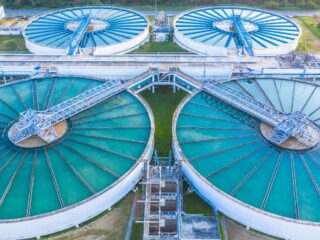
Navigating Home Construction Loans
The journey of building your dream home is an exciting endeavor, filled with possibilities and personalisation. To bring this vision to life, understanding the intricacies of construction loans becomes paramount. Construction loans, also known as self-build loans, play a crucial role in financing the creation of a personalised living space. These loans differ from traditional home loans, providing short-term financial support tailored to the construction phase of your dream home.
In this guide, we will navigate the landscape of construction loans, shedding light on their unique features and the vital role they play in turning dreams into reality.
Understanding Home Construction Loans
Construction loans serve as financial instruments designed explicitly for funding home construction projects. These loans differ from traditional mortgages, offering a specialized solution tailored to the unique needs of building a home. The primary purpose of construction loans is to provide the necessary capital in a phased manner, aligning with the various stages of the construction process.
How Construction Loans Work
The process of construction loans involves several key steps.
Firstly, applicants undergo a qualification process where lenders may assess the construction site to determine the home’s future value. Once approved, funds are disbursed in installments rather than a lump sum, directly correlating with the progression of the home construction. This allows for more control and efficient utilization of resources during the building phase. Notably, some banks refer to these installments as ‘progressive drawdowns’. During construction, borrowers may make interest-only payments, easing financial strain until the home is completed and ready for traditional mortgage payments.
Types of Home Construction Loans
Construction-to-Permanent Loans
Construction-to-permanent loans are designed to provide funds for both the purchase of land or existing property and the subsequent construction or redevelopment. These loans transition seamlessly from the construction phase to a traditional mortgage upon the completion of the home. This approach streamlines the financing process, offering convenience and continuity for borrowers.
Stand-Alone Construction Loans
Stand-alone construction loans are chosen when borrowers prefer distinct financing for construction and mortgage phases. Unlike Construction-to-Permanent loans, stand-alone options involve separate agreements for construction and permanent financing. Some individuals may opt for stand-alone construction loans for more flexibility and customisation, or if they already own the land and want a tailored financial solution for the building process.
Owner-Builder Construction Loans
Owner-builder construction loans cater to professional builders in Australia who choose to act as their general contractors. These loans acknowledge the expertise of owner-builders and provide the necessary funds for construction. This option allows skilled individuals to manage and oversee the building process, offering a more hands-on approach to home construction.
Renovation Construction Loans
Renovation Construction Loans in Australia are tailored for significant renovation projects on existing homes. These loans provide financial support for substantial home improvements, allowing homeowners to enhance and modernise their properties. Renovation construction loans consider the increased value of the renovated home when determining the loan amount and repayment terms.
Preparing to Apply for a Construction Loan
To obtain a construction loan in Australia, several key requirements need attention. Lenders typically consider the applicant’s credit score, with a higher score enhancing loan eligibility. A down payment, often ranging from 20% to 25% of the total project cost, is a common prerequisite. Detailed project plans, including council-approved designs and a comprehensive budget, are crucial. Lenders assess these plans to ensure the feasibility and scope of the construction project, contributing to a smooth loan approval process.
Choosing a Builder
Selecting a reputable builder is not only integral to a successful construction project but is often a requirement for loan approval. Lenders emphasise engaging licensed and reputable builders with a proven track record. It is advised to obtain a detailed building contract from the chosen builder, demonstrating their commitment to the project and ensuring transparency throughout the construction process.
Creating a Detailed Plan
Lenders prioritise applicants who present a detailed construction plan and a realistic budget. These plans should include council-approved designs, a thorough scope of work, and an itemised budget.

A well-prepared plan not only enhances the loan approval chances but also serves as a roadmap for successful project completion. It is crucial to align the plan with the lender’s requirements to ensure a smooth and efficient loan application process.
The Application Process
To secure a construction loan, certain standard loan documents are required, including identification, proof of income, and assets/liabilities information. In addition to these, specific construction loan documents are necessary and obtainable from your builder:
● Signed Building Contract: A finalized HIA/MBA building contract signed by you and the registered Master Builder.
● Contract of Sale for Land: Providing evidence of land ownership or the land sale contract.
● Quantity Surveyor Report: Depending on project cost, a report may be needed in the contract.
● Council-Approved Plans: Approval from state and local councils before commencing construction.
● Evidence of Builder’s Insurance: Details of insurance matching or exceeding the building contract, including owner and builder names, property address, and policy expiry.
● Quotes for Out-of-Contract Items: If additional work is required, provide quotes for lender assessment.
● Receipts for Out-of-Contract Items: Proof of purchase for items not in the building contract.
What to Expect
During the loan approval process, lenders in Australia may conduct:
● Appraisals: Assessing the property’s value to determine loan eligibility.
● Inspections: Ensuring the construction plans align with the approved documents.
● Credit Checks: Evaluating the applicant’s creditworthiness.
● Loan Underwriting: Thorough analysis of the application and supporting documents.
Closing the Loan
● Final Signed Progress Payment Invoice: Signaling the completion of the final construction stage.
● Building Insurance Policy: Including a Certificate of Insurance, Certificate of Currency, or Home Building Policy Schedule.
● Variations: Any changes to the building contract must be outlined.
● Certificate of Occupancy and Compliance: Issued by the state government, certifying compliance with building codes and laws.
Managing Your Construction Loan
Draw Schedule and Inspections
During the construction phase, a draw schedule outlines the disbursement of funds to the builder. This schedule aligns with specific construction milestones.

Regular inspections play a crucial role in this process, ensuring that completed work meets quality standards. Lenders typically conduct inspections before releasing funds to maintain transparency and verify the project’s progress.
Interest-Only Payments
Construction loans often involve interest-only payments during the construction period. Borrowers can choose to repay both principal and interest, but many opt for interest-only payments to manage costs while the property is being built. Once construction is complete, the loan transitions to regular mortgage payments, including both principal and interest.
Dealing with Delays and Overruns
Managing delays and budget overruns is crucial to avoiding disruptions to the loan and project timeline. Tips include proactive communication with builders, maintaining a contingency fund for unforeseen expenses, and having a realistic timeline from the outset. Regular communication and collaboration with builders, contractors, and lenders are essential to navigate and mitigate potential delays and overruns.
Alternatives Loan Options
Online loans offer various benefits, including flexibility in fund utilisation and potentially quick access to funds, often on the same day of application. They can be used for debt consolidation, home improvement, moving costs, and more.
Secured vs. Unsecured Personal Loans
Secured Loans
Secured loans require collateral, providing the lender with the right to seize the asset if the borrower fails to repay. This type of loan often comes with lower interest rates due to the reduced risk for the lender.
Unsecured Loans
Unsecured loans, on the other hand, don’t require collateral, making them accessible without risking personal assets. However, they usually have higher interest rates as they pose a higher risk to the lender.
Importance of Choosing a Reputable Financial Institution
Selecting a reputable financial institution, such as Friendly Finance, is crucial when acquiring a personal loan. Reputable institutions provide transparency, fair terms, and reliable customer service, ensuring a positive borrowing experience.
Conclusion
Construction loans, covering costs from land acquisition to building materials, offer flexibility and financial support throughout the construction process. While there are complexities to navigate, such as the disbursement of funds and approval processes, construction loans stand as valuable resources for individuals aspiring to create their dream homes or undertake property development projects in Australia. Understanding the intricacies, advantages, and potential challenges of construction loans is pivotal for making informed decisions and ensuring a smoother journey in building one’s envisioned property.





